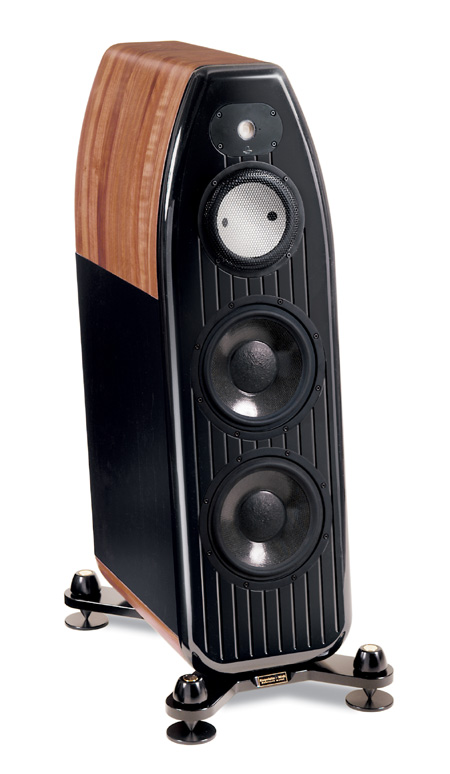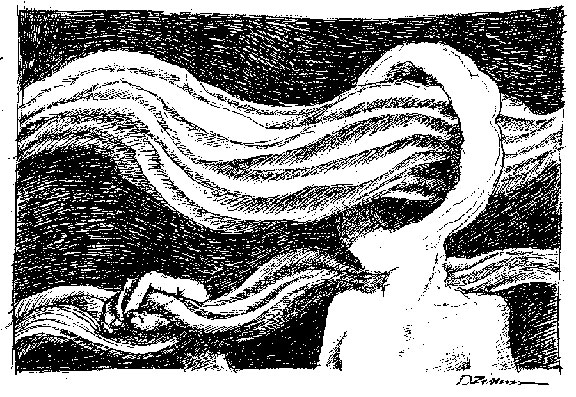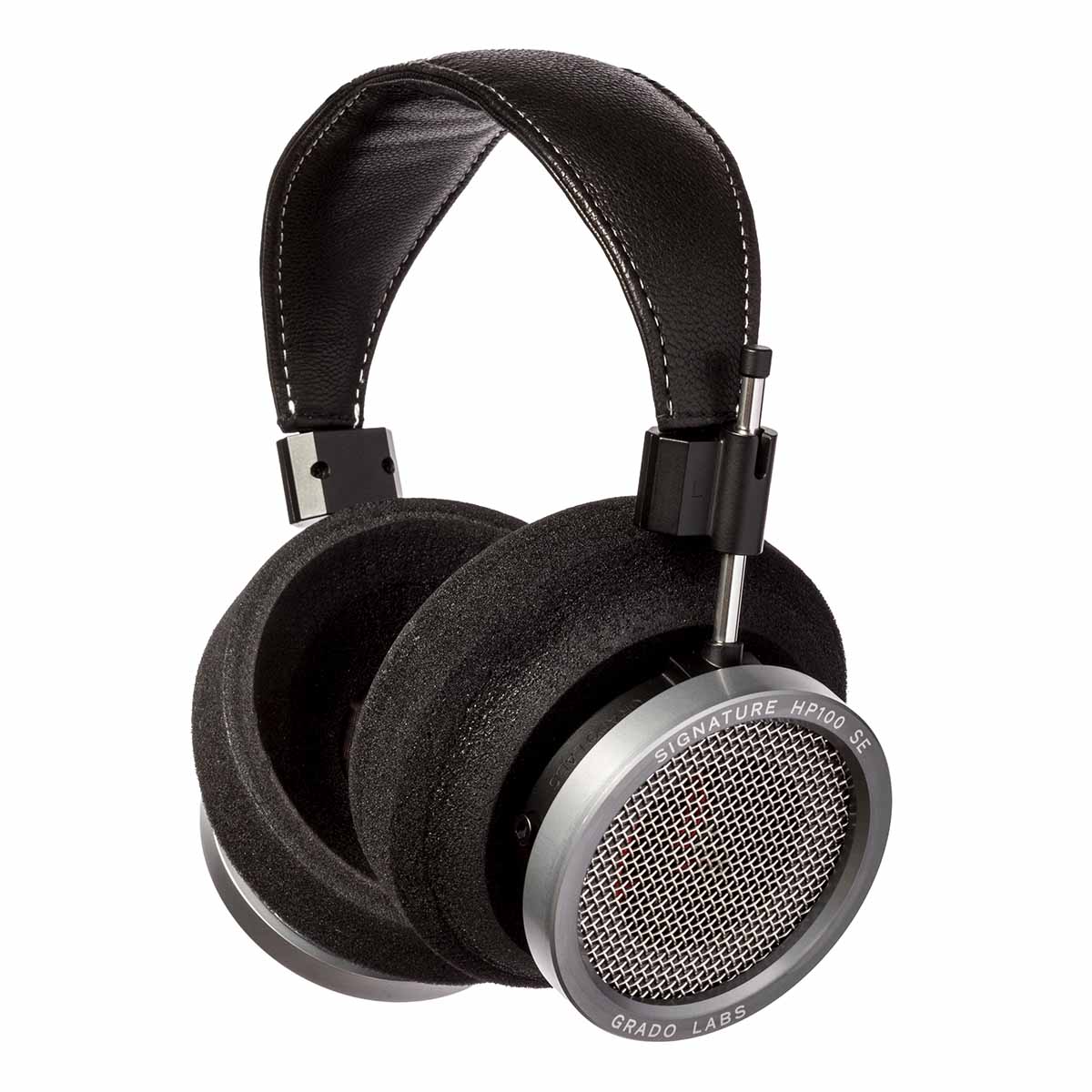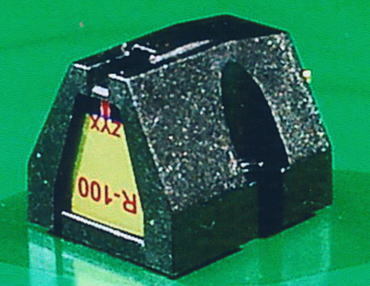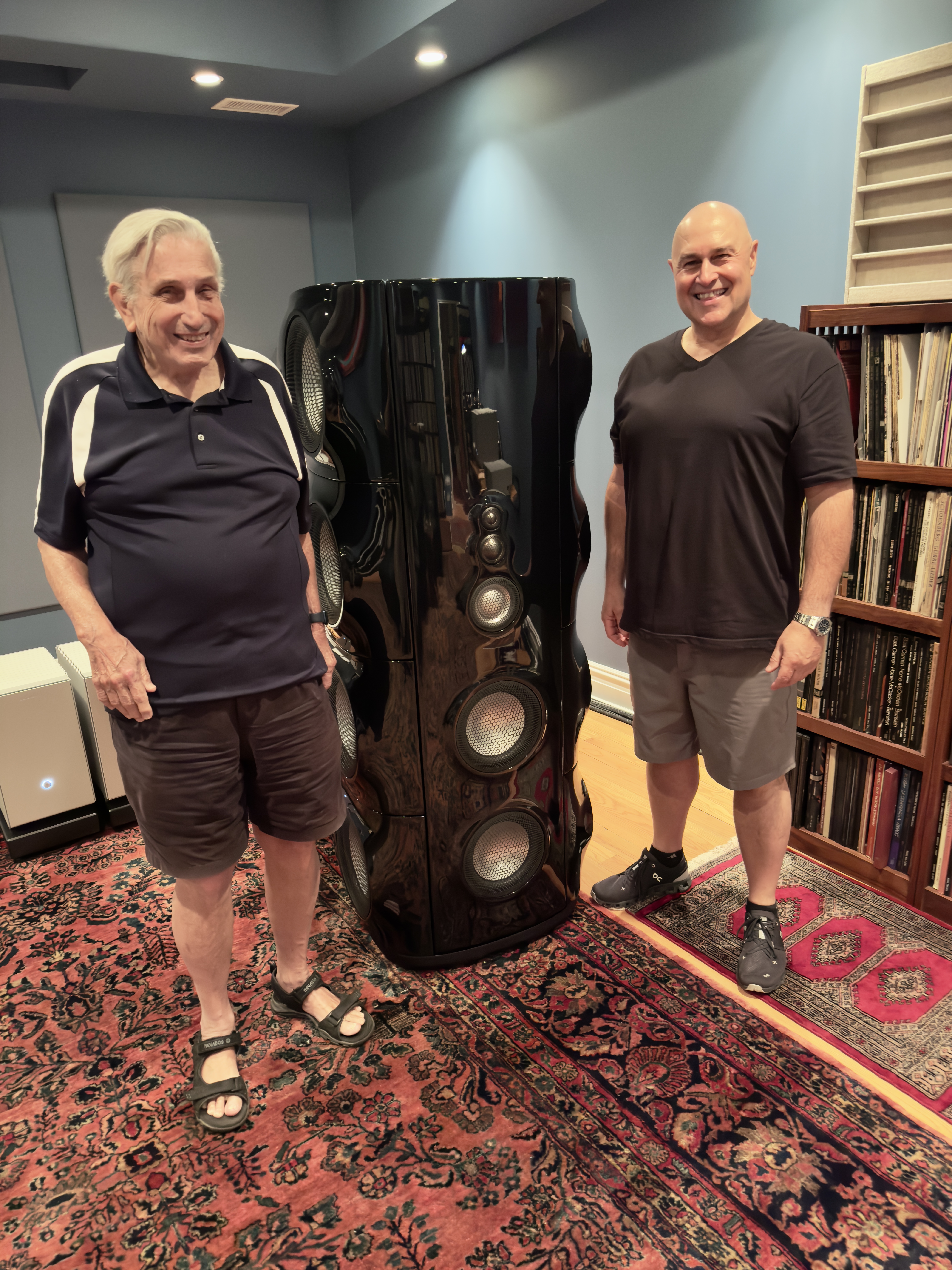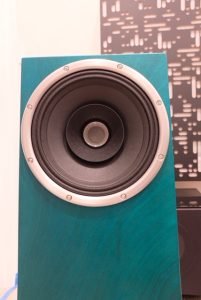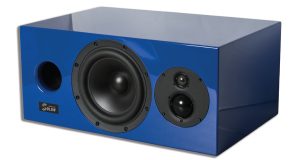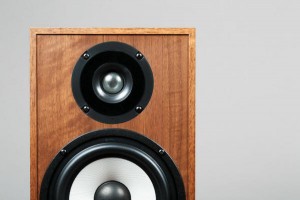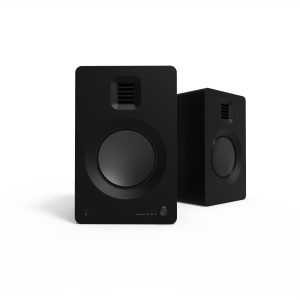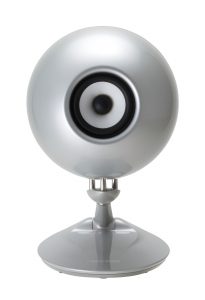This article, as reviewed by Victor Chavira, Dave Clark, and Larry Cox, originally ran when audioMusings was in print. Issue 3. 1998
I always welcome the opportunity to listen to speakers other than my. own. Usually, the experience confirms my wisdom in choosing Magneplanars. No matter the strengths of a particular speaker, I always return gratefully to the open and spacious sound of my Maggies. (I wear my audio bias proudly on my sleeve.) A dynamic speaker would have to swing mighty hard in order for me to consider switching. Even then, to equal the satisfaction I derive from my Magneplanars, it would probably cost two to three times as much.
Enter the Odeon 17 loudspeakers. The 17s are two-way, stand-mounted speakers. The most striking thing about the Odeon is its tweeter, a one-inch soft dome loaded by a small wooden horn lathed from birch laminate. The tweeter is complemented by a 6 1/2” slot-loaded polypropylene woofer. The solidly built, birch-veneered enclosure is offset by black side panels.
I decided to try out the Odeons in my medium-sized bedroom. I placed the speakers away from from the walls, on the beautiful, heavy wood stands provided by the distributor. The 17s demonstrated many satisfying qualities in this environment, and that is where they remained for the duration of the review. The first quality that impressed me about them was their ability to project a deep, wide soundstage, even within the reduced listening space of my bedroom. I perceived a proper layering of instruments while listening to trombonist Conrad Herwig's Grammy-nominated Latin Side of Coltrane CD. Trumpets, trombones, and saxes sounded spread out and distinct from one another when they played in unison. Congas and bongos resonated with a visceral “pop.” I was also impressed with the Odeon's reproduction of cymbals. The horn-loaded soft-dome tweeters realistically rendered the subtle “snick, snick, snick” and “ping” of the ride cymbal, in a way that the quasi-ribbon of my Maggies can't match.
The 17s imaged beautifully. Of course, excellent imaging is a well-documented attribute of two-way mini-monitors, though I have heard many expensive two-ways that left me wondering what the big deal was. The 17s are also more sensitive (89dB) than the Magneplanars (84dB), which may be why I was able to peer so deeply into the soundstage. The Magneplanars just aren't sensitive enough to extract the last bit of sound from the musical horizon. A good example of this can be heard on Keith Jarrett at the Blue Note, Saturday, June 4th, 1994, first set. This disc begins with a four-minute introduction of chordal permutations on solo piano. Like a great orator, Jarrett allows for brief pauses between “paragraphs” of notes, giving his audience time to comprehend the fullness of his musical “words.” Here, the Odeons worked like finely-focused lenses, granting me a closer perspective into the nuances and liveliness of the event.
This is an image of the Odeon 13... the 17 looked quit similar.
Tonal balance was another nod in favor of the 17s. This is a result of the Odeons' smooth woofer-to-tweeter transition. Probably the most tell-tale sign of hi-fi vs. real music is a poorly articulated transition between tweeter and woofer. All the better two-way dynamic speakers strive to get this transition right. The Odeon 17s should be added to this elite list.
On the other end of the spectrum, the Odeons did not completely acquit themselves. They are, after all, small, stand-mounted box speakers. I have yet to hear a speaker of similar dimensions that did not exhibit some degree of midbass emphasis and coloration. Think of an identical low note played on both bass and cello. Both notes are “correct,” yet, depending on the listener, one will sound more pleasing. Small two-way monitors always sound like cellos to me, and the Odeon 17 is no exception. Nevertheless, it is a cello beautifully played. Optimally set up, in a medium-sized room such as my bedroom, the Odeons will produce sufficient bass extension to satisfy most listeners.
Overall, the Odeon Number 17s produced a highly focused yet non-fatiguing sound. On the bright-to-warm scale, they correctly pointed in the warm direction in my tube-based system. Except for a mild mid-bass emphasis, the 17s demonstrated no distracting anomalies. This allowed the speaker to withdraw itself from the process and let the music shine through. Victor Chavira
I think the Odeon 17 loudspeakers are quite stunning to look at, though some may find them more duckling than swan. The Odeon 17 uses a flared horn to load its conventional tweeter. Consisting of at least nineteen layers of laminated wood, the horn is turned on a lathe to create a beautiful, though unique, portal for the tweeter to do its business through. The woofer's output is augmented by a slot located just below the smallish, 5.5" driver, which runs the width of the front baffle. Veneered in a combination of black and natural grained wood, the Odeon is quite an eyeful.
As to how they sound, well, they don't really sound like anything at all. One word that comes quickly to mind is "clarity." The Odeon 17's are as clear as the proverbial bell. Listening to a few of my old favorites, plus one new favorite, revealed details and nuances previously unheard through our reference Apogees or their soon-to-be back-ups, the Chario Hyper Reference 2000's. On Low's The Curtain Hits the Cast I was immediately struck by how visceral the tone and texture of the electric guitar was, as each string was strummed by a pick. Low features three musicians playing bass, drums, and guitar that subtly shift dynamics and rhythms in songs that are minimal in structure and pacing. The Odeons reproduced this recording in all its glory. The same applies to their reproduction of Calexico's Spoke. Featuring plucked, strummed, or struck acoustic instruments in what can be described as western American folk music for those who are slightly off-balance, Calexico is a real joy. The Odeon's brought out their instrumentation in a very captivating way, again allowing me to hear subtle textures and details only hinted at by the Apogees. Switching back to the Apogees (or the Charios), however, I was surprised to find that the Odeons were significantly leaner from the mid-bass down. This character was not a liability on recordings that featured instrumentation from the midrange and up, but it came into the picture on recordings that are bass driven, or lean to begin with.
Pace and dynamics were right on. Listening to Joey Baron's Down Home and Ginger Baker Trio's Going Back Home was quite enjoyable, as both feature songs propelled by drummers. The Odeons were quick and agile, allowing songs to get up and move at volume levels that belied their size. The Odeons simply disappeared, projecting instruments in a large and stable soundstage with life-like palpability, with no coloration to mask or distort the music. Nevertheless, the strong and propulsive bass playing on these two discs revealed the Odeon's bass limitations, especially after substituting either the Apogees or the Charios. The Odeons simply lack much useful output in the mid to lower bass regions, resulting in a lean but still quite musical sound. This was definitely more of an error of omission than commission, and only revealed itself on tracks that were, shall we say, "full-range." Unfortunately, the added warmth and oomph of the other speakers was simply more fulfilling in the long run. The majority of the recordings that we listen to demand that this quality be brought to life. I did have the Odeons several feet out into the room which no doubt reduced any room boundary support within this frequency range. This placement fits in with the other speakers we use, but may not have been the best choice for the Odeons. Moving them closer to the rear wall did warm things up a bit and added more oomph to the low end. But their overall balance remained intact‑fast, clear, and lean.
The Odeons are remarkable for their ability to be revealing but never aggressive or bright. Their strengths lie in the areas of dynamics, pace, and clarity, all of which are very captivating, but they do lack the warmth and bass required to be a must-buy. Remember though, that these are small speakers, so one has to temper one's expectations. If you want more bass, go for one of the larger Odeon models, but the 17 is still impressive within their frequency range. The 17 look like works of art and sonically will produce what's on the disc, and in my system, minus a few bass fundamentals. Dave Clark
I only had a short time to listen to these speakers, first because my system was down, then because the Odeons had to go back to the Odeons' U.S. distributor, Axiss Distribution. What follows, then, are only first impressions. As with EVERY review, this one should not be more than a means of determining whether to listen to these speakers at your dealer.
I received the Odeons at about the same time I took delivery of my ATC SCM 20s. The ATCs retail for about $4000, almost a third more than the Odeons. I spent more on them than on any other component I've owned, and I stretched my budget to purchase them. Although I liked them, I was concerned that I'd spent too much money. Enter the Odeons.
Whereas the ATCs are wolves in sheeps' clothing, the Odeons wear no clothes. The ATCs are mini monitors that can play big and loud, with a surprising bottom end for a speaker so small. The Odeons are a small speaker that doesn't aspire to be full range. They are petite, and play
with a light touch. I placed the Odeons where I'd had the ATCs, about three feet into the room and two feet from the side walls, and they disappeared without a trace. I've had speakers disappear in my system, but it usually takes quite a bit of tweaking to do it. Firing straight ahead, with little or no toe-in, the speakers were a joy. My decision to pay more for the ATCs began to seem ill-advised.
The Odeons were more delicate and sweet on the top end, by a substantial margin. The top end seemed a bit more extended, though not overly prominent, and well integrated. Most of the music I listen to doesn't have a lot of very high frequency information, so generally speaking, top end extension isn't terribly important to me. However, the Odeons sang the highs so well that I wanted to have more music with lots of high frequency information.
The midrange was transparent and clean. Vocals were delicately portrayed. The midrange was very refined, by which I mean that vocals communicated the little details that make high end reproduction understandable to non-audiophiles. Pardon me if this puts you off, but as I was listening to Jewel's debut CD, I imagined I could see the fine hairs on the skin of her throat as she sang. The presentation was really involving!
The bottom end was reasonably good, though not in the ATCs' ball park. Before switching back to the ATCs, I thought that the Odeons' bottom end was acceptable, if a little lightweight for a speaker at nearly $3K. After switching back to the ATCs, I found I preferred them. The ATCs can play LOUD, and are dynamic, ready for whatever you stick into the transport or onto the turntable. The Odeons are a more delicate speaker that I think is probably more at home, although very much at home, with small acoustic ensembles, chamber music, or jazz trios. Other music will certainly be well presented. The question is whether the lightweight bottom end is acceptable to you. People listening in smaller rooms might well prefer the Odeons. If you can swing the admission price, you should listen to them. They are very very sweet, and warrant attention. Larry Cox
Odeon 17 Loudspeakers
Retail $2600





